Cover Photo: Ethan Stone
[Editor's Note: This review was conducted on the 2018-19 Armada EDollo, which is unchanged for 2020, 2021, 2022 & 2023 except for graphics.]
Roofbox Reviews: Our no bullshit, in-depth ski reviews, by skiers for skiers. No sponsored athletes, no 'we took three runs at a ski test'. Brands send us the sticks and we spend a solid chunk of our own seasons shredding them. Then, when we feel we've spent enough time on a ski to judge it fully, we tell you what we honestly think about the pros and cons of the ski and who we think it will work for. It's a matter of pride for us that 'NS Tested' means something, that these reviews can't be bought and that we advise you as best as possible what you should be slinging in your roofbox.
_
Ski: Armada EDollo
Length skied: 180
Actual length (tip-tail w/ straight tape): 177.8
Shape: 135-99-125
Measured weight (each ski): 2044/2046g
Mount: True center
Binding: Tyrolia Attack 16
Days skied: 30+
Reviewer height/weight: 5'9, 145lbs
Review location(s): Saas-Fee, Klappen
Conditions skied: Freshly groomed, icy days, chopped up pow, fresh snow, park, mellow tree skiing, open terrain, Kimbosessions
_
Intro:
The EDollo has remained unchanged since its introduction in 2013 (though it was formerly known as the Al Dente) and in that time, it’s become something of a classic. At least in Europe, where I’m based, it’s probably THE most common ski to see in the park (at least on good skiers), which is a solid testament to its popularity. As such, it’s no surprise that the ski hasn’t changed because ‘if it ain’t broke, don’t fix it’. Except that now, after five years, the EDollo has received its first ever changes.
The older model was definitely one of my personal favorite skis despite a couple of flaws: thin edges and a slight imbalance between the stiffer tail and softer nose being two of the primary ones in my mind. So while the new ski is far from a full revamp, in fact, it has pretty much the same footprint as the older model, I was very excited to see if they’d fixed the few things I didn’t love about it and turned it into the unbeatable park ski it has the potential to be for someone who skis as I do. There are also two brand new sizes, a 172 and a 164.
_
Shape/Flex/Construction
The new EDollo retains the same rocker profile and footprint as the previous model. That means full sidecut, a moderately (by today’s standards (see Vishnu, ON3P, Faction Prodigy etc for reference) rockered nose and a full camber tail with a large tip. The ‘19 ski does have more camber underfoot than previous models though.
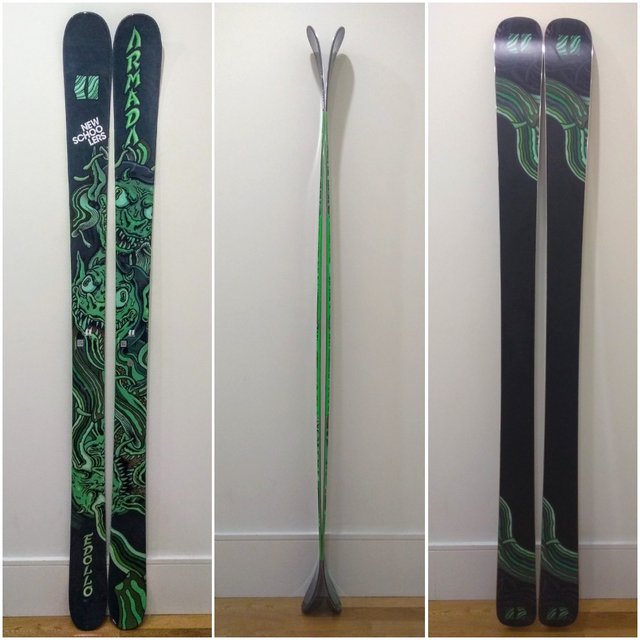
The main changes to the ski come in the form of construction. The move to Armada’s new AR75 sidewall construction means the EDollo now has ‘full’ sidewall underfoot (actually half cap), with a thinner sidewall running to the rocker point in the tip and all the way to the contact point in the tail of the ski. Like the ARV series, there are also full-length Ash stringers in the core, rather than only harder wood underfoot, which should theoretically strengthen the ski. The new EDollo also has thicker edges than previous models but gains some weight as a result.
The flex of the ski also remains very similar to the previous model. The tail is certainly softer on the new EDollo, but the extended sidewall seems to keep the tail relatively torsionally stable, which balances it out in most situations. The nose is still very soft and the middle two-thirds of the ski is still decently solid (though that solidity doesn’t extend as far into the tail as it did before).
_
On Snow:
The full sidecut of the EDollo has always combined well with the cambered tail and fairly mellow rocker in the nose to make for a surprisingly versatile ski. That is still the case, even with the tail being a touch softer. I really enjoy how they carve in good conditions, and even with your edges detuned underfoot, there is a fair amount of effective sharp edge, unlike with many of the heavily rockered jib skis that the EDollo might typically be seen as competition for. They are still fairly torsionally stable too, probably thanks to the extension of some sidewall all the way to the contact points in the new AR75 constructions. Certainly more so than the Blend which is perhaps the closest ski to these on paper (they are also still stiffer than the Blend in general). Overall, I see them as the best carving of the really soft, jib oriented skis if that is a relevant consideration for you.
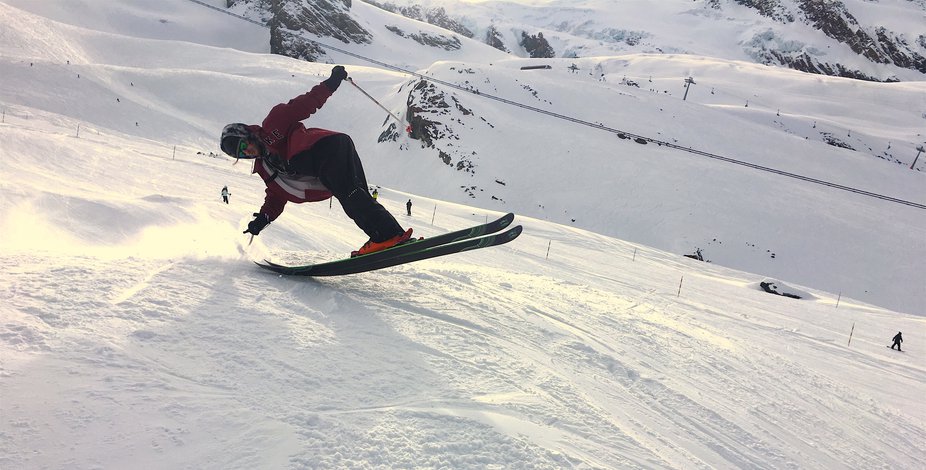
Photo: James Coates
_
They also ski pow quite nicely with the cambered tail giving some nice support on landings, but the full sidecut does count against them here. They flex nicely when you turn them sideways and push but they are definitely prone to hooking. When you encounter chunky, mixed or heavier snow though, the soft flex isn’t really enough to push through. The ski still has a nice shape but they are so soft in the shovel, which deflects off pretty much anything hard. They definitely do get a bit shaky at higher speeds too and aren’t good on ice, but if you want something better, you are going to have to go with a ski less oriented to playful skiing. The ARV 96, K2 Poacher, Line Chronic etc are all technically superior in performance in most or all of these all-mountain aspects, but I still prefer riding the EDollo as a daily ski.
_
Park/Jibbing:
The EDollo is Armada’s flagship park ski and so it’s park performance that really matters and the EDollo remains fairly unique in that aspect. With many park skis stiffening up and/or offering huge amounts of rocker in both tip and tail, the EDollo looks almost more traditional now, but its soft flex and cambered tail offer a different take on the stability vs playfulness compromise.
Overall, I prefer the more traditional feel offered by these compared with super rockered skis like the Vishnu Wet and, to a lesser degree, ON3P Magnus. Some people want the looseness those skis offer, and I definitely like it at times, but overall I’m not convinced when it comes to skiing it all. The quickness offered by skis like the Wet and Magnus is unmatched but on balance, I’d trade that for a touch more stability. On jumps, I didn’t find the EDollo washy in the tail at all, unlike the Blend or Wet (and to some degree Magnus). In fact, they pretty much matched up to most park skis.
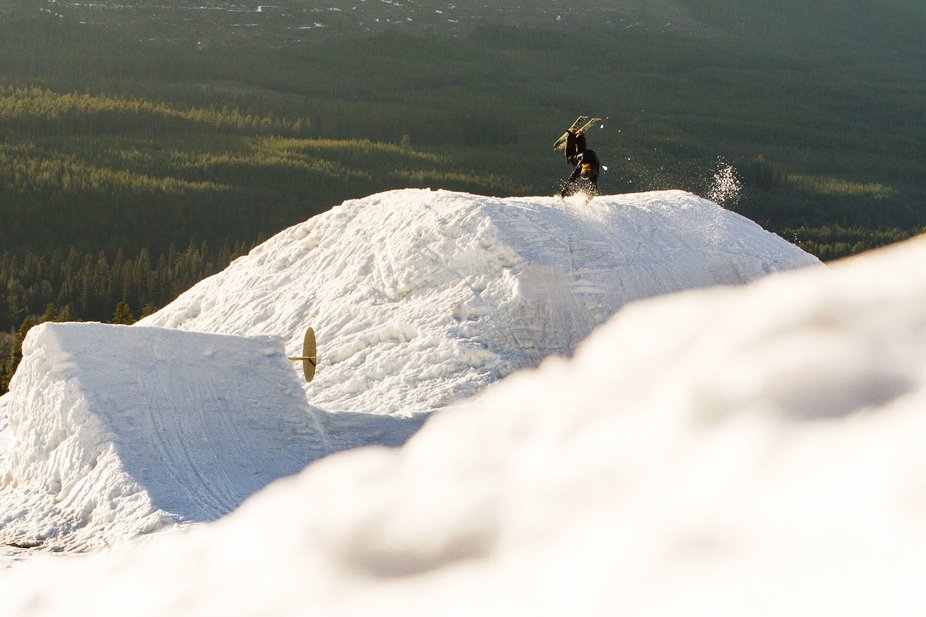
The perfect ski for Kimbosessions. Photo: Ethan Stone
_
One thing softening the tail does do is balance the ski a bit better, which used to be somewhat party upfront (soft and jibby), business in the back (cambered and fairly solid). Now the rearmost portion of the tail, while still having camber, is more easy to flex. That allows you to easily load up for ollies and tailbutters without sacrificing too much stability. The new core provides more pop than previous iterations of this ski too. The pop out of ollies and butters is nice, and they are still one of the easiest skis to nosebutter on the market. The issue I had with the old model still remains - the rockered section is so soft compared to the rest of the ski that it’s hard to stall out butters/nose manuals - but that is still a really niche point. The swingweight is average too, with the ski lacking any kind of lightening technology (and featuring thicker edges than previously) so they wouldn’t be my pick for a super easy to spin ski either on rails or jumps, especially with the 180 length being a tad long for my taste. Although I found the ARV 96 a much easier ski to spin overall, it was lacking in fun – something the EDollo offers in abundance. However, there are more playful skis out there. The Vishnu Wet, the Magnus, the Blend and even the ARV 106, it could be said, offer more in that respect, but what the EDollo does do a good job of is hitting the jibby aspect primarily, while still being a fun daily ski and very much one that’s still decent to jump on.
In terms of rails, the relatively flat, untapered shape feels ideal on 5050s, with maximum contact yet no taper or much camber to get in the way. More rockered/tapered shapes are easier to surface swap, but the EDollo is still pretty good, and for me, the 98mm platform is close to perfect.
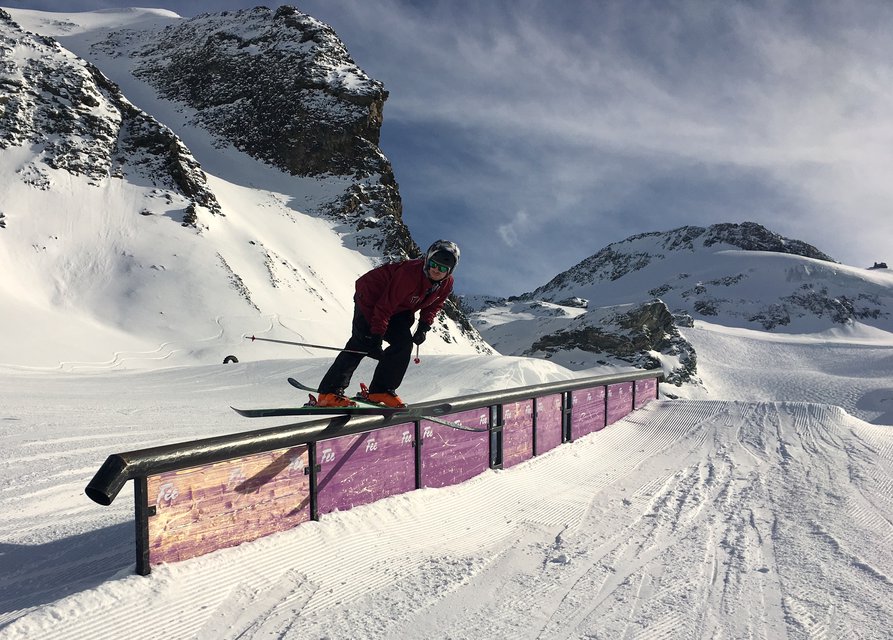
Mandatory rail shot. Photo: James Coates
_
Durability:
It used to be that the ARV 96 (weirdly) had thicker edges than the EDollo, but the new models of each now feature identical edges. That, along with similar construction means the two should be very similar in terms of durability. Stiffer skis tend to be less prone to snapping, but that is not an issue I’ve ever had myself with any EDollos/Al Dentes. I rode the EDollo longer than any other ski last season and they held up decently.
After thirty days I’ve lost all the gap filler between the four-piece-wrap edge segments, but don’t have any notable delamming. The loss of filler isn’t ideal, and happened across the board on all the Armadas I tested this season but it never became an issue during testing time. I also have a couple of edge cracks on each side but again, no delam or pullout yet. The topsheet did suffer some damage, even exposing the core in a couple of places, but nothing a quick coat of epoxy couldn’t fix. In all, I have ridden skis that looked better after similar amounts of time, ON3P Magnus being one example. But I would describe the issues I experienced as normal for me over the time period, so I’d say durability was average.
_
Conclusion:
This conclusion is hard to write, mostly because for reasons I can’t entirely explain, I love these skis. I have no reason to believe they are particularly durable ski, nor do I think they are truly a standout ski in any single aspect. However, like the Line Elizabeth, for example, they have a certain je ne s’ais quoi about them that makes them unique. Continuing in a somewhat confusing vein, the EDollo kind of suits everyone and no-one at the same time. They aren’t the best jump ski available, even in the width category. They aren’t the softest ski (Blend) or most versatile either. But they handle all aspects of park skiing pretty well and are tons of fun while they do it.
The subtle changes do make them a slightly better ski to me but in all honesty, you rarely notice them. In a way, that’s great because all Armada have done is made an already great ski, slightly better in areas where it may previously have lacked. The closest comparison is the Blend and I prefer the EDollo for the extra stability, particularly in the tail. Previously, when the ARV96 felt a bit softer and had wider edges, choosing EDollo or 96 was tricky. But now the ARV feels more solid and more all-mountain, the EDollo is definitely the superior jib ski (easier to flex, more forgiving landing in tight transitions etc). For me though, the one a lot of people are going to find difficult is choosing between the EDollo and the ARV 106. The ARV 106 feels a touch heavier in the air thanks to the width. But the actual weight is near identical, they have the same edges and the ARV is vastly superior all over the hill while being just as good for most jibbing. The only thing is it’s slower for those tech tricks. For pure park, I’d take the EDollo, but I wouldn’t need to be doing much more soft snow skiing than none to start favoring the 106. I rode the Dollos mostly for end of season park days, but when it came to trips with some variety involved, I took the 106.
But at the end of the day, the EDollos are my Editor’s Pick for park simply because they were my favorite park skis to ride day in, day out. They are a modern classic for a reason and the minor tweaks only improve them further.
_
If you have any questions about the EDollo, feel free to hit me in the comments and I'll do my best.
To see our reviews before anyone else, download the Newschoolers App: iPhone - Android
Find out what I'm reviewing in real time: @twig_spens
Next up from me: Vishnu Wet/Wide

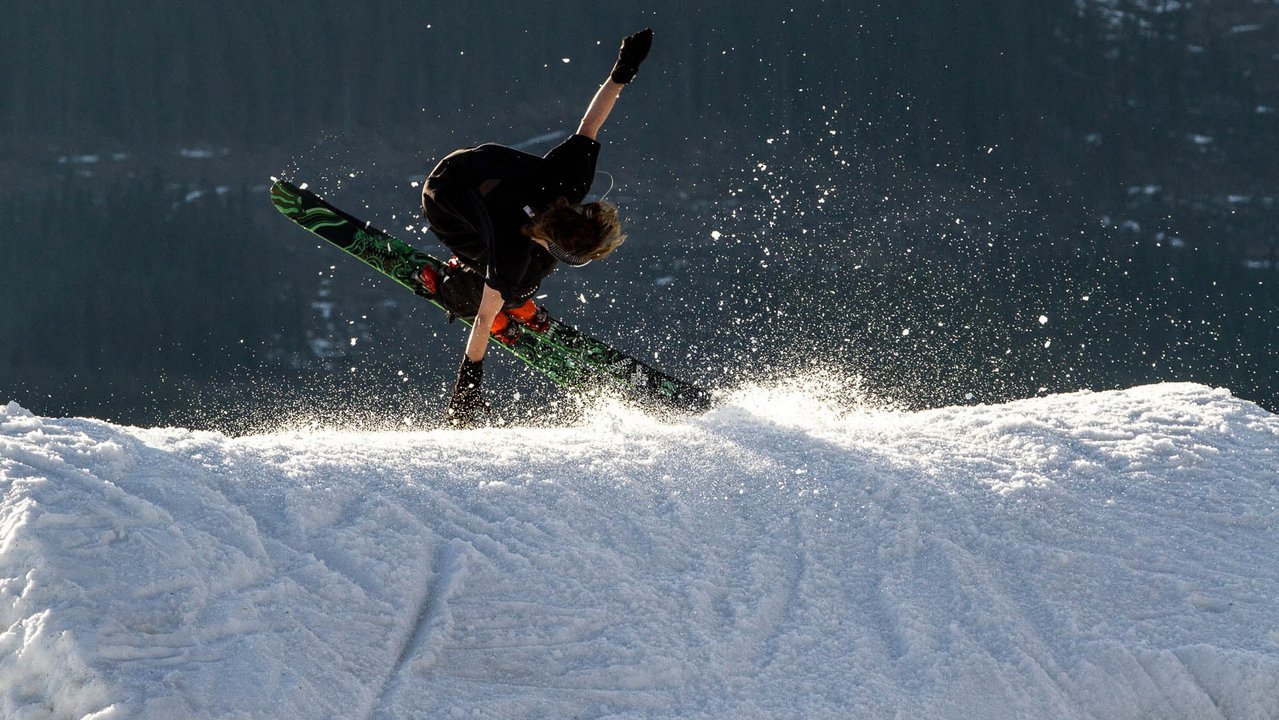
Comments